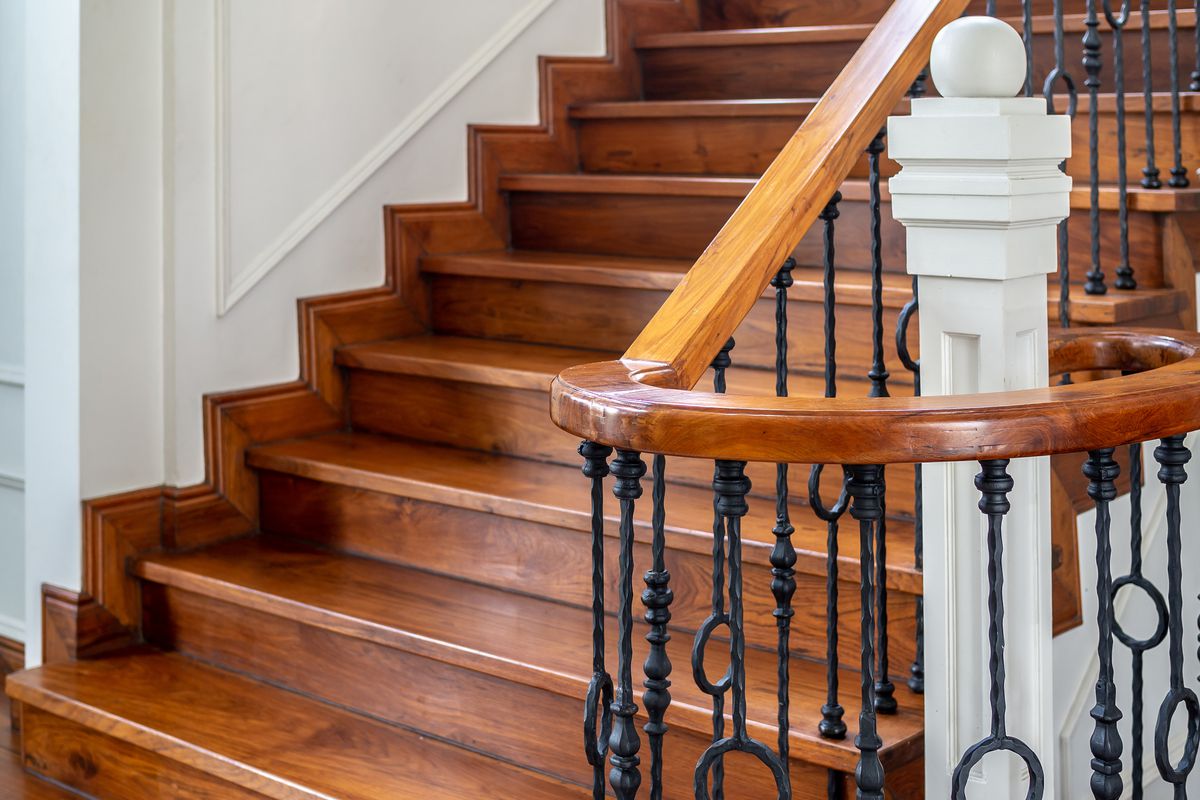As construction materials dry out and a house settles, there may be a few spots on the floors that squeak when someone walks on them. This is a natural occurrence that affects wood construction houses and condos, new and old. When you walk across the floor, the sub-floor may rub against the joists or, if you have wood strip floors, the boards will rub against each other.
When the joist dries, it can become bowed or cupped which results in a space between the subfloor and the support. Walking on that spot can loosen the fasteners causing the floor to bounce and make noise. Floors that have exposed joists can be repaired from below. Usually, this is done from the basement or crawl space. Enlist a helper and ask them to help you find the squeaky spot by walking around the room above. Next, use a hardwood shim coated with carpenter’s glue and tap it in gently between the joist and the subfloor. Secure it with a screw that goes through the beam and the subfloor. Trim and remove the excess.
A hold-down bracket is an alternative to shims. It’s designed to attach to both the joist and the subfloor with plates connected by an adjustable bolt. Fasten a plate to each surface, insert the bolt into the fittings, and tighten. This will pull the subfloor tightly to the joist to eliminate movement.
If you cannot access the joists from below, try one of these methods to secure the subfloor from above. If the squeak is under carpeting, you can try special breakaway screws or pull back the carpet. Kits such as the Squeek No More Kit are designed to go through carpet. They snap off flush with the subfloor for an invisible patch. These work with varying degrees of success. You may want to try pre-drilling the holes and squirting in some carpenter’s glue to decrease bounce even further. Another method is to pull the carpet back and, using a stud finder, locate and drive screws into the joists through the subfloor.
Hardwood floors can develop creaks from shrinkage. In older Lake Cowichan homes, the lack of a frictionless layer of floor paper means the floor might be rubbing directly against the subfloor. The solution is to use break-away screws designed specifically for tightening wood strip floors. Pre-drill a hole, drive the screw, break off the head, and use a quality wood filler or a solid wood plug to match the existing finish.
Noisy stairs can be fixed from the top or the bottom. When working from the bottom, use wood shims and glue wherever open seams are found. Adding blocks to support joints will strengthen the entire structure by making it stiffer so it will move as a unit and not flex. Glue and screw the blocks into place. When working from the top, you might try the break-away screw method. Adding quarter round trim to the joint between the tread and the riser may work, as well. Be sure to glue and screw the trim piece so it’s fastened tightly. Consider hiring a carpenter for an afternoon, if necessary.
Questions or comments? Want to talk about your next real estate transaction? Contact Sandy Stinson today to view character homes in Lake Cowichan.

